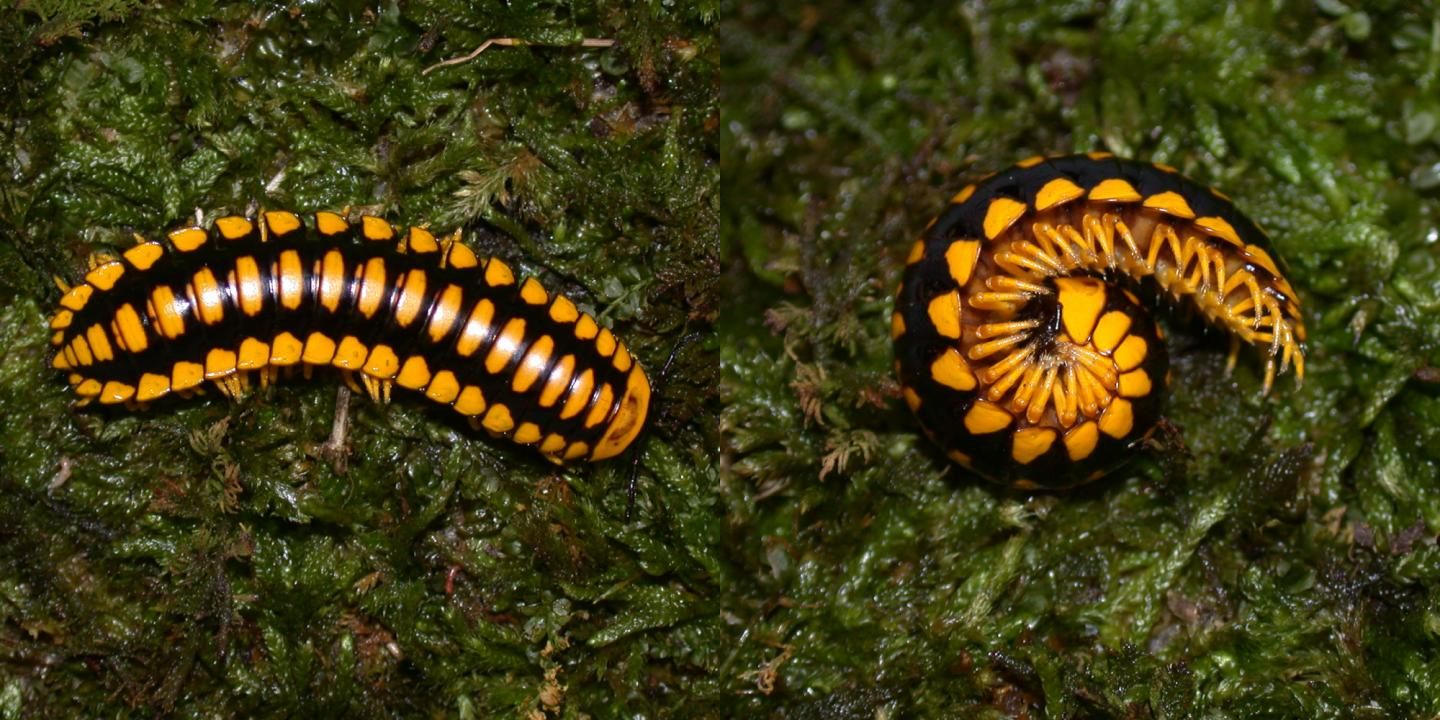Found: A Millipede With 6 Colorways and a Cyanide Coating
A bright, shining example of “predator education.”

Paul Marek, an entomologist at the College of Agriculture and Life Sciences at Virginia Tech, is a serial discoverer of new arthropods—from a black dwarf tarantula that bears his name to the world’s leggiest known creature (as many as 750 wiggling limbs). And he has just helped identify yet another fascinating new invertebrate.
Apheloria polychroma is a millipede, about the size of your thumb, that was found crawling around the forest floor of southwest Virginia’s Cumberland Mountains. There are a few things that make the little wriggler stand out. First, it comes in more hues than any other known millipede species—a total of six different colorways, which is why Marek and fellow entomologists Jackson Means and Derek Hennen named it “polychroma.” And second, it is covered in cyanide—yes, that cyanide—to deter avian predators.
The color and toxicity are linked, as they are for a number of brightly colored species, from snakes to frogs to insects, as a signal to predators to stay away. So a variety of other millipedes copy its various styles of coloration. This common form of flattery even has a name: Müllerian mimicry, after German naturalist Fritz Müller, who first proposed the theory in 1878 after observing the way tropical butterflies in Brazil’s Amazonian rain forest “may evolve a similar appearance so as to share the costs of predator education.”
Marek, who runs the only millipede lab in the United States, hopes that documenting such new species will spare them the sad fate of “anonymous extinction,” when species disappear before we even know they exist. “It is imperative to describe and catalog these species so that we know what role they play in the ecosystem—and what impact we are having on them,” the entomologist said in a release. “This region [Virginia] is ripe with biodiversity and is an excellent living laboratory to do this work.”













Follow us on Twitter to get the latest on the world's hidden wonders.
Like us on Facebook to get the latest on the world's hidden wonders.
Follow us on Twitter Like us on Facebook